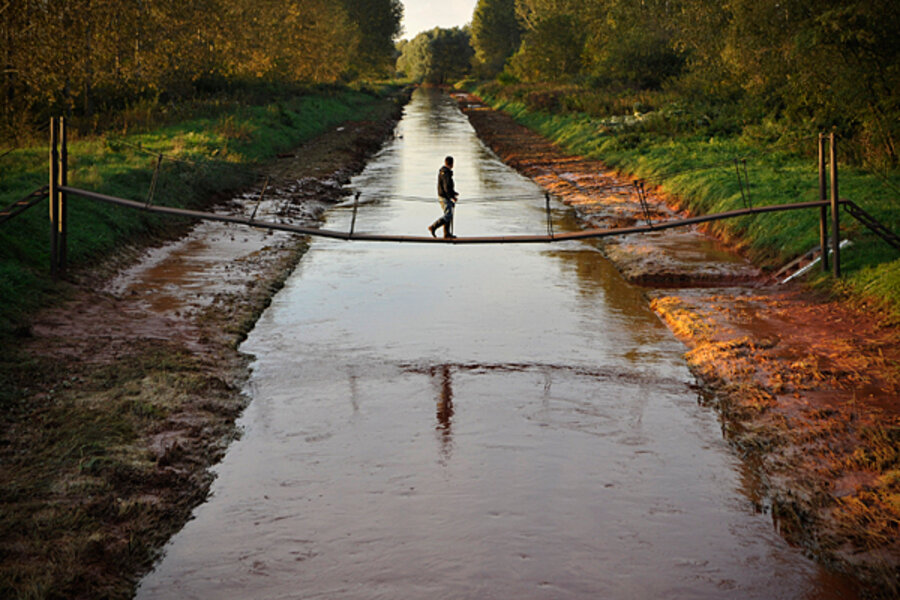Will Hungary's toxic red sludge spill extend beyond Danube?
| Graz, Austria
Hungary's Prime Minister Victor Orban today made a guarded request for international help to contain the environmental damage from the 35 million cubic feet of toxic red sludge that burst from an alumina refinery earlier this week.
The spillage, which gushed from the Ajkai Aluminia Refinery after the dam for a containment pool burst, reached the Danube, Europe's second-longest river, earlier today at higher concentrations of toxic material than environmentalists had expected.
IN PICTURES: Hungary sludge flood
Earlier this week, the wave of red sludge submerged streets, houses, and fields over an area of around 2,000 acres, draining into water systems. The sludge, or "red mud" as it's called in the refining industry, now threatens to become a cloud of toxic dust as it dries. Prime Minister Orban today said that many local residents would not be able to return.
Level of toxicity
The first of the pollution reached the Danube at midday today at an alkaline level of pH 9 (a healthy, neutral river pH is a little over 7).
The pH level is "much higher" than expected, says Gabor Figeczky, acting CEO of the World Wildlife Fund, Hungary. Anything over pH 7, says Mr. Figeczky, "will have severe effects."
When the sludge rushed into the Marcal River, it had a pH level of 13. The Marcal River is a “dead river,” says Zsolt Szegfalvi, director of Greenpeace Hungary. Natural life was “completely wiped out.”
While the pH levels have decreased as the impact of the spill reached the Danube, the impact of leaking into the Danube could be far-reaching because of its length and connection to the Black Sea.
Will toxic spill extend beyond Hungary?
"We expect the effects of the spill will remain within the boundaries of Hungary," says Figeczky. The pH should return to something close to normal by the time the contamination reaches Budapest.
In the villages where the river of red sludge flowed through earlier this week, killing at least four people, dry weather is becoming a major concern. As the red sludge dries, says Mr. Szegfalvi, the chemicals within it become airborne.
“The buildings that remain – it’s impossible to restore them," he says. “It’s going to be a long time before we can recover this area.”
Orban said foreign financial help was not necessary, but that international expertise would be appreciated.
"The most serious part of this disaster is that there is no experience of a catastrophe like this," said Marton Vau of Greenpeace Hungary.
Alkalinity measurements abound, but the exact composition of the sludge remains unknown. Its red color comes from one of the most-certain and least harmful contents, iron oxide. Some worry that the sludge, the byproduct from the alumina processing, contains potentially dangerous heavy metals such as mercury and lead. MAL Zrt, the owner of Ajkai Aluminia Refinery, says that it doesn't.
Correspondent Ariel Zirulnick in Boston contributed to this article.





